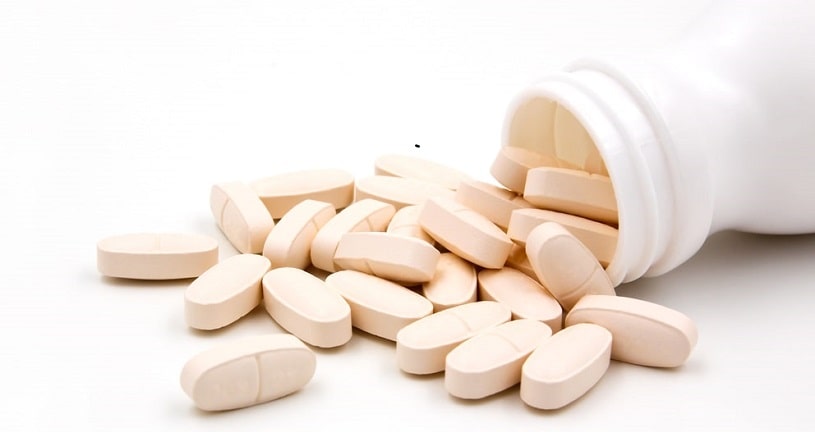Codeine is a drug that is commonly prescribed for pain management and sometimes for the suppression of coughs. It is addictive for those who develop a tolerance or experience prolonged use. It carries a high potential for abuse.
Table Of Contents:
Despite this, the dependence can be treated, and addicts can find a normal life again after substance abuse recovery. So, what is codeine? This article will provide information on codeine addiction, symptoms of withdrawal, half-life, and treatment.
What is Codeine?
This is a medication that belongs to a class of pain medications known as opiates. It alters the way the brain perceives and processes pain information. By doing this, it helps to relieve mild to moderately severe pain.

More About Painkillers:
It works in the brain, and because of this, codeine addiction can develop even when used exactly as prescribed. For instance, it may be prescribed in the treatment of a dry cough.
The scheduling of codeine-containing drugs by the Drug Enforcement Agency depends on the amount of the substance per dosage unit of the medication.
It Is As Follows:
- Schedule II: More than 90 milligrams per dosage unit, or when alone in any medications as codeine sulfate
- Schedule III: Less than 90 milligrams per dosage unit
- Schedule V: Less than 200 milligrams per 100 milliliters or 100 grams
When codeine is on Schedule II, it is strictly prescription only, but the regulations on other formulations are a lot looser. It is possible to obtain some codeine-containing drugs, such as cough syrups like those with acetaminophen and Aspirin, over-the-counter without a prescription.
Codeine Addiction
Codeine abuse is defined as any medication usage that is not prescribed or recommended by a doctor. Many people who abuse or develop codeine addiction do not start with that intention. Many of these are patients who are given medication containing this drug by prescription to manage pain or a cough. Once they take these medications for long enough, their bodies develop a tolerance, and the initial dose is no longer effective.
At this point, they may increase the dose to make the drug effective against pain again. They may do this with or without informing their doctor. A higher dose will also be tolerated and will get to a point where it is no longer effective and cause them to increase the dose again.

Codeine addiction begins with this cycle. The larger the initial dose they were given, the more likely it is for a full-blown addiction to result. Without information from their doctor, they are unaware of the extent of the codeine effects it can have on their health.
It does not stand as the most used drug from the opiate class, but it can act as a gateway drug. Users may eventually branch out into using harder prescription pain medications and illegal drugs such as heroin. This especially becomes a likelihood if a patient does not find avenues to get a prescription for codeine sulfate anymore, or if they are taking large drug amounts and not getting the same level of the desired effects as they did the first time.
Codeine Addiction Statistics
The opioid epidemic is a significant public health problem in the United States. Studies always seek to answer questions such as what is codeine and other opioid drugs’ prevalence of abuse? The NSDUH sets out to do that every year.
The 2019 National Survey on Drug Use and Health found that 0.9% of people who had participated in the study admitted to having misused the drug in the previous year. This misuse was most prevalent in those between 26 and 34 years of age, with 1.32% of them having abused it last year. The prevalence was close in those between 18 and 25 years of age, at 1.3%.
One worrying statistic from this study is that 0.89% of those between 12 and 17 had abused the substance last year. This information demonstrates how codeine addiction is a drug problem even in adolescent age groups. It tends to be abused as part of the drug concoction “purple drank” in this age group.
Codeine sulfate is a commonly used drug, with 8.75% of the population admitting to having used it, including legitimate medical reasons, in the past year.
Codeine Addiction Signs
When abuse of this drug occurs, it causes some changes in individuals’ bodies and health besides the effects that they use it for. These can be seen from abusing codeine-containing tablets, cough syrup, or purple drank.
These Symptoms Include the Following:
- Impaired muscle coordination
- Drowsiness
- Confusion
- Slurred speech
- Poor judgment
- Inattention
- Dilated pupils
- Slowed breathing
- Slowed heart rate
Warning signs to watch for in family members may begin much more subtly. Still, as the codeine addiction progresses and time moves on, one will probably start to notice behavioral changes in their loved one.
He or She May Begin to Show Any Of the Behavioral and Social Traits Below:
- Become more withdrawn or sullen, or may suddenly become outgoing
- Spend money he or she does not have with no explanations on what it was used for
- Behave secretively, lock doors, refuse to tell where they are going
- Have a sudden decrease in energy
- Have frequent mood swings or personality changes
- Lose interest in activities they once enjoyed
- Stop dressing nice, abandon personal hygiene habits
- Visit their doctor frequently or change to a new doctor often. They may have multiple prescriptions for the same medication.
If there are any reasons to believe that a loved one is engaging in drug abuse or has a full-blown codeine addiction, there are steps to take to get them the needed care. When addiction is left untreated, it can have significant health consequences.
Dangers of Mixing Codeine and Alcohol
Opioid drugs like codeine have the unwanted side effect of causing respiratory depression. With codeine and alcohol, the risk of this occurring is much higher. It also increases the risk of cardiovascular depression, which will cause the heart rate to slow down and the blood pressure to drop.

Besides that potentially fatal consequence, codeine and alcohol can cause similar effects. When they are used together, these effects are accentuated by one another. This combination does a lot to cognitive function. It can cause severe drowsiness, dizziness, and impaired focus, reaction times, as well as judgment. This is very dangerous not only to the addict but also to others if they operate heavy machinery or are behind a car’s wheel, for instance.
How Long Does Codeine Stay In Your System?
When codeine sulfate enters the body, it can not be utilized by the body until it is converted to morphine. This change happens thanks to a member of the cytochrome P450 enzyme family — CYP2D6. Only 5-10% of the total dose ingested is converted to morphine. The remaining portion is converted to byproducts that have no significant effect on the treatment of pain.
Codeine half-life in the plasma is about 2.9 hours, and it is mainly excreted through the urine. Once a dose is taken, 90% of it would have been cleared out through the urine within 24 hours. The 10% that remains is passed out in the feces.
However, despite this, traces of the medication can still be found in the body for days after using it. Depending on the body substance examined, its detection times can vary significantly.
They Are as Follows:
- Blood: Less than 24 hours
- Saliva: 12 to 36 hours
- Urine: Up to 3 days
- Hair: Up to 3 months
Codeine Withdrawal
The constant use of this medication makes changes to the brain and the body. It gets used to the presence of the medicine and becomes dependent on it for functioning. Codeine withdrawal is simply the human body’s way of learning how to function without the substance again. It can manifest itself in several symptoms, which vary in number and severity depending on the person.
Detoxing From Codeine Sulfate Has Similar Effects on Health to Detoxing From Any Other Opioid:
- Headaches
- Insomnia
- Muscle aches
- Fever
- Nausea
- Vomiting
- Sweating
- Stomach pains
- Diarrhea
- Dehydration
- Depression
- Cravings
While none of these symptoms are life-threatening on their own, there is a chance they could increase in severity or lead to complications with other health conditions a user has. It is, therefore, often best to be cautious and seek medical help to detox.
Codeine Withdrawal Timeline
The half-life of a drug is the amount of time it takes for the drug concentration in the body to become half the original value. Codeine half-life is relatively short at just about 3 hours.
Due to this relatively short half-life, users who want to quit may begin to feel the effects of codeine withdrawal mere hours after abstaining from the substance. Within 12 hours, they may start to become irritable and feel the start of physical symptoms.

These physical symptoms include vomiting, diarrhea, headaches, muscle pain, and sweating. The period of one to three days after the last use is where the symptoms peak. Cravings are also at their peak here, and care should be taken as relapse most commonly occurs here.
About a week after the last use, these symptoms of codeine withdrawal should have resolved for the most part. However, psychological symptoms which appear after the peak may persist, such as anxiety and depression.
Quitting cold turkey refers to abruptly cutting off from the drug, as opposed to gradually tapering off. This can be the quickest way to recover and quit the substance, but the withdrawal symptoms are most intense with this method, increasing the chance for relapse. It is important to note that even when an addict has mostly recovered, emotionally stressful moments in life may bring cravings.
Cocaine Addiction Treatment
Since suddenly abstaining from any drug is dangerous to the health, and in some cases fatal, it is highly recommended to wean off slowly and only under the supervision of a trained medical professional.

Tapering off this drug involves slowly decreasing the amount of the substance used each day so that withdrawal symptoms are far less severe. The downside is that the detox can last far longer, anything from a few weeks to a few months. Usually, the tapering off process is monitored by a doctor.
If codeine addiction is severe, a doctor may choose to prescribe a substitute opioid, such as methadone, to reduce the severity of withdrawal symptoms. However, there is always a chance that the user may substitute one addiction for another.
There Are a Few Options that Can Help Guide Someone Through the Detox Process:
- Inpatient treatment – A user can check into an inpatient center for a set period (usually 1 month, but can be up to 3 months). The center will guide the user through the detox process under close medical supervision and will also give the user individual and group therapy sessions along with information on addiction through addiction education lessons.
- Outpatient treatment – Normally used after an inpatient program but can take place on its own. The user will be guided through detox under medical supervision, taking the form of a regular check-up which can be up to every day in severe cases.
- Individual Therapy – A therapist will form a firm understanding with the user and talk them through the underlying factors that cause their codeine addiction. Although this form of treatment can prevent long-term relapse, it is unlikely to carry out immediate detox.
- Group Therapy – A therapist leads a group of people with similar problems. Although it does not provide the targeted focus of individual therapy, it can offer the detoxing user a social support network to help prevent relapse. Group members who are more advanced in the detox process can serve as role models for the group.
- 12 step programs – Social support groups usually run by former addicts (who may not be professional therapists) provide many of the benefits of group therapy.
Group therapy sessions and one on one counseling are also highly recommended. Both of these options help users to recognize pitfalls, interact with others who have been in their shoes, and discuss the cause behind the codeine addiction and why it happened in the first place.
While all of these avenues can be accomplished separately, an inpatient treatment center will provide access to all of them in one location, combined with the safety of being in an enclosed environment where access to drugs is nil. This will increase the chance of recovery success over the long haul.
Note that these methods are not mutually exclusive; therefore, it’s possible to move between them.
When To Get Help?
Codeine addiction is a big drug problem. Those who use medications containing codeine sulfate as prescribed may find themselves addicted even after using it as prescribed. Adolescents and young adults may become addicted through cough syrups and lean.
There are potentially fatal consequences of codeine addiction, so it is essential to tackle this problem as soon as it is identified. If there is a loved one struggling with addiction to the opioid, they can be treated, and they can find help. Getting on track for a better life is just a step away.
Hope Without Commitment
Find the best treatment options. Call our free and confidential helpline
Most private insurances accepted
Page Sources
- Drug Enforcement Agency Diversion Control Division, Controlled Substances Schedules, https://www.deadiversion.usdoj.gov/schedules/
- Boom M, Niesters M, Sarton E, Aarts L, Smith TW, Dahan A, Non-analgesic effects of opioids: opioid-induced respiratory depression, 2012, https://pubmed.ncbi.nlm.nih.gov/22747535/
- Dean L, Codeine Therapy and CYP2D6 Genotype, 2012, https://www.ncbi.nlm.nih.gov/books/NBK100662/
- Actavis Pharma, Fioricet with Codeine C-III Clinical Pharmacology, 2013, https://www.accessdata.fda.gov/drugsatfda_docs/label/2013/020232s036lbl.pdf
- Food and Drug Administration, FDA Drug Safety Communication: FDA restricts use of prescription codeine pain and cough medicines and tramadol pain medicines in children; recommends against use in breastfeeding women, 2018, https://www.fda.gov/drugs/drug-safety-and-availability/fda-drug-safety-communication-fda-restricts-use-prescription-codeine-pain-and-cough-medicines-and
- MedlinePlus, Codeine, 2020, https://medlineplus.gov/druginfo/meds/a682065.html
- MedlinePlus, Opiate and Opioid Withdrawal, https://medlineplus.gov/ency/article/000949.htm

 Authored by
Authored by  Reviewed by
Reviewed by 

